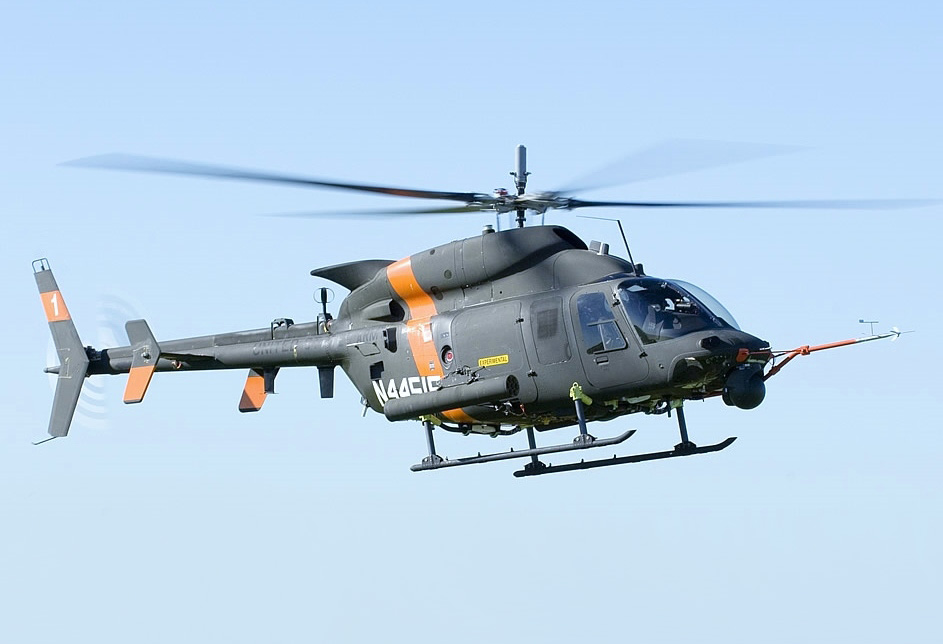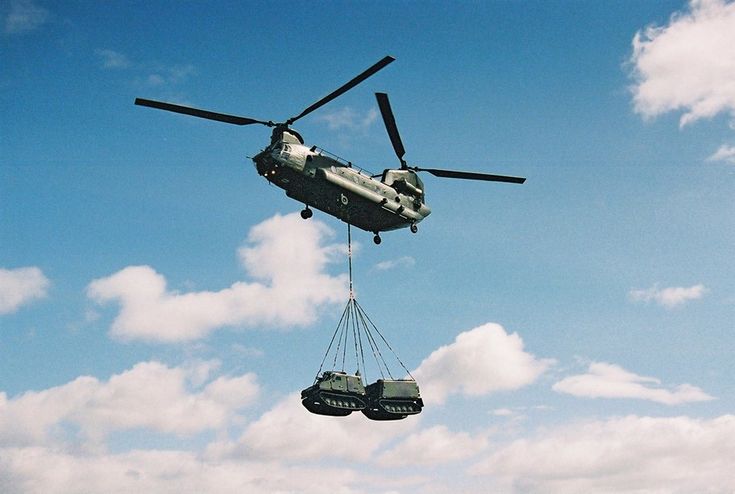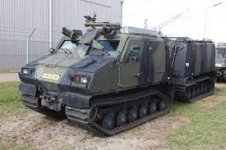Kirkhill, your numbers

confirm that Canada’s entire green aviation capability equates to but one CAB/GSAB(-), and there is probably close to a small icecube’s chance in a super-nova of having any non-green rotary assets anywhere near a deployed land force element. At best, rotary use practically wouldn’t be dedicated/committed constantly to anything above BG-sized formations. The 100% numbers are never seen practically in use because the fleet size numbers we built around serviceability/op availability numbers. That’s why you’d probably only see a Coy Gp lifted in an airmobile op, using 4-6 Chinooks. Same reasons I doubt that you’d ever see an airborne use of 5 CC-177s. If the TRUH program delivers a V-280 or even Defiant-like capability to replace the Griffon, I’m pretty sure that it won’t be anywhere close to the 85 figure of the current Griffon fleet.
Thanks for confirming my numbers. I also agree with your political (both military and civil) assessment of the probabilities.
But I stand by my position that there is capability there. Capability that should have an exploitable plan. Even if it is an in extremis plan. IF, that notorious word, IF it were required could Canada deploy, and sustain, a light brigade in Nunavut, or Alaska, with national assets. And I will stipulate that we are talking about dispersed company teams operating from localised logistical and support hubs. The fixed wing assets are simply to get to those hubs. I agree that sucking up all the C-17s and the Hercs in a single parachute drop is unlikely, although, again, independent company teams could be deployed and sustained with the assets on hand, I believe.
Is the capability equivalent to that of a single CAB/GSAB(-)? Absolutely not. But we have some capabilities in the field that could be effectively employed to cover much of the full spectrum of conflict likely to be encountered domestically and in North America. In that context even the LAVs have utility if combined with the Stryker BCTs in the States. And the Light Bdes/Bns could operate with the US Infantry BCTs.
My broader point is that we focus on the particular and ignore the general.
We spend our time in fora like this debating how we can fight in the most absolutely dire set of circumstances and then concentrate our efforts on designing a force for that particular case. We then assume that that particular force will have general application to all other parts of the spectrum.
In the process we develop, and justify, a tiny perfect force. A force that never seems to become perfect but always becomes tinier. A force that aspires to contribute to a multi-national high-end conflict that might happen and yet spends its time doing "other stuff" in the inconsequential part of the spectrum that we assume we can cover.
My primary point is, rather than detailing what we can't do because of what we lack, can we focus for a bit on what we can do with what we have?
That is where I see the big difference between us and the Europeans, particularly the Scandinavians and the Easterners. They are forced to look at the threat, the Russians, ask themselves what can the Russians do, then ask what can be done to counter them with whats on hand. Even if it is just molotovs, sticky bombs and Blacker Bombards.
Once that exercise is complete then they, and we, can look at our domestic/NORAD capability gaps and start to fill them.
And the first place I would look to find the capabilities to plug those gaps is the Artillery. Artillery purchased to support the forces and capabilities we have.
FJAG is right. (I don't say that too often).
I have been focusing on the Chinese threat. Because it is in the headlines and it exercises our American friends, neighbours and allies. As well as the Aussies, Kiwis and Brits.
The Russians I have relegated to a side show with the greatest likelihood of contact being, in words that CzechPivo might recognize,"in a far away country, between people of whom we know nothing". For the rest of us that was Chamberlain justifying his inaction over the Sudetenland in 1938. The Sudetenland was less than 1000 km from Dover, less than the distance from Windsor to Quebec City and reachable by the existing ferries, roads, rail and aircraft of the day.
But, after taking another look at the Arctic, in the context of the a long range US expeditionary capability, the context of the establishment of Russia's new bases, the context of Russia's predilection for undeclared regional conflicts in its border zones, and context of the immense instability in the energy market, after taking another look at the Arctic, the probability of having to deploy troops to Alert, to Resolute, to Inuvik, to Iqaluit, to Thule, or even to Little Diomede is increasing. It is approaching the likelihood of a Russo-Scandinavian conflict. And perhaps it is more likely. Scandinavia is a little too close to Russia's strategic infrastructure at Murmansk, St Petersburg and Kaliningrad. And it is a hard target. That would not be a Ukrainian war of little green men and a constantly running sore. It would quickly escalate to a major, international conflict. And economically it would gain Russia very little.
Conversely, all that arctic natural gas that we are unwilling to exploit (MacKenzie Pipeline), Putin has already started exploiting for geopolitical power and for treasure.
The arctic was protected for decades, generations, by the prospect of nuclear conflict. People have worked around that obstacle long enough that the fear of nuclear conflict is not as visceral, nor as widely held, as it was.
Ukraine is a modern country with well developed infrastructure to all points of its borders, well connected and with a useful national army and a reasonably well developed national arms industry. And only one major exploitable ethnic split.
Compared to Canada Ukraine is a hard target.
What happens if, instead of barricades showing up on railway tracks, unfortunate events such as that at the radar station PIN-3 alluded to by G2G and Kevin, start increasing? Or the locals in the north, like those in Greenland, start getting better financial offers for their resources. How long until the frozen north becomes as unstable as the Donbas?
And when would the US decide it had to risk direct confrontation with Russia by assisting Canada with a domestic problem?
All this to say that we need to focus on the risks at home and how we can manage them with what we have.
Then figure out the gaps and what we need to fill them.
And, by all means, look at the Artillery first. It can likely be procured, faster and cheaper, and is becoming more capable, than Air Force assets. Although the difference between a Guided Projectile and a RATO assisted jet powered UAS/Drone is becoming vanishingly small.
The need to transport troops and assets will never go away. That technology will constantly change. It will require constant replacement and upgrading.
Oops. I did it again.









